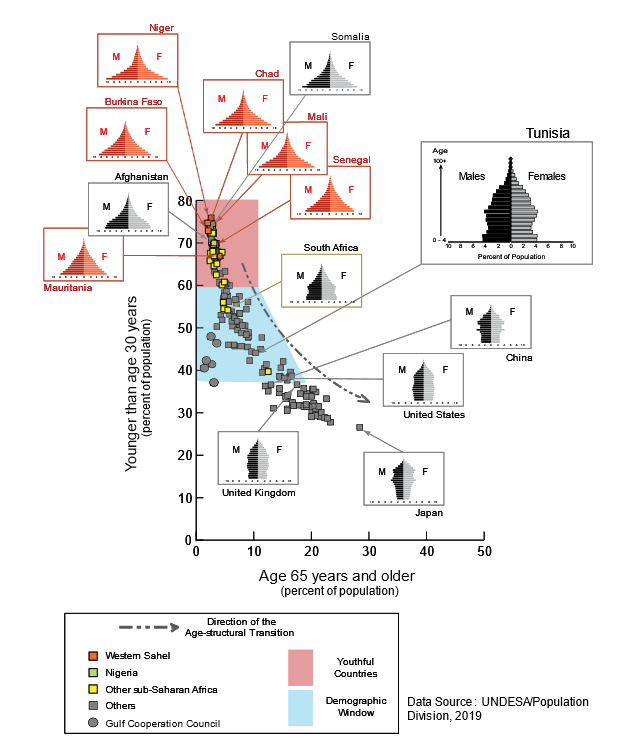
With but a few exceptions, the political elites in the Western Sahel seem unmoved to address, or even discuss, the drivers of sustained high fertility. In the region, these include forced early marriage of girls and high rates of adolescent childbearing; a very limited degree of educational opportunity and autonomy among women; large desired-family sizes coupled with short birth intervals; and limited access to, and knowledge of, modern contraception. Without a focused effort to reverse these drivers, the Western Sahel risks drifting to a tipping point—a moment Afghanistan encountered in 2021, and Somalia in 1993—when European governments, the United States, and key international and regional organizations abandoned their commitments, opting instead to contain spillovers of political violence, criminal activity, and out-migration at the regional frontiers.

Figure 1. The positions of the six Western Sahelian states in the youthful phase of the age structural transition (note positions of Afghanistan and Somalia).
The remainder of this article is found on the Wilson Center’s New Security Beat website by clicking here.
Or view or download from here
To view or download full Atlantic Council report on Sahelian demography and its implications click here.
